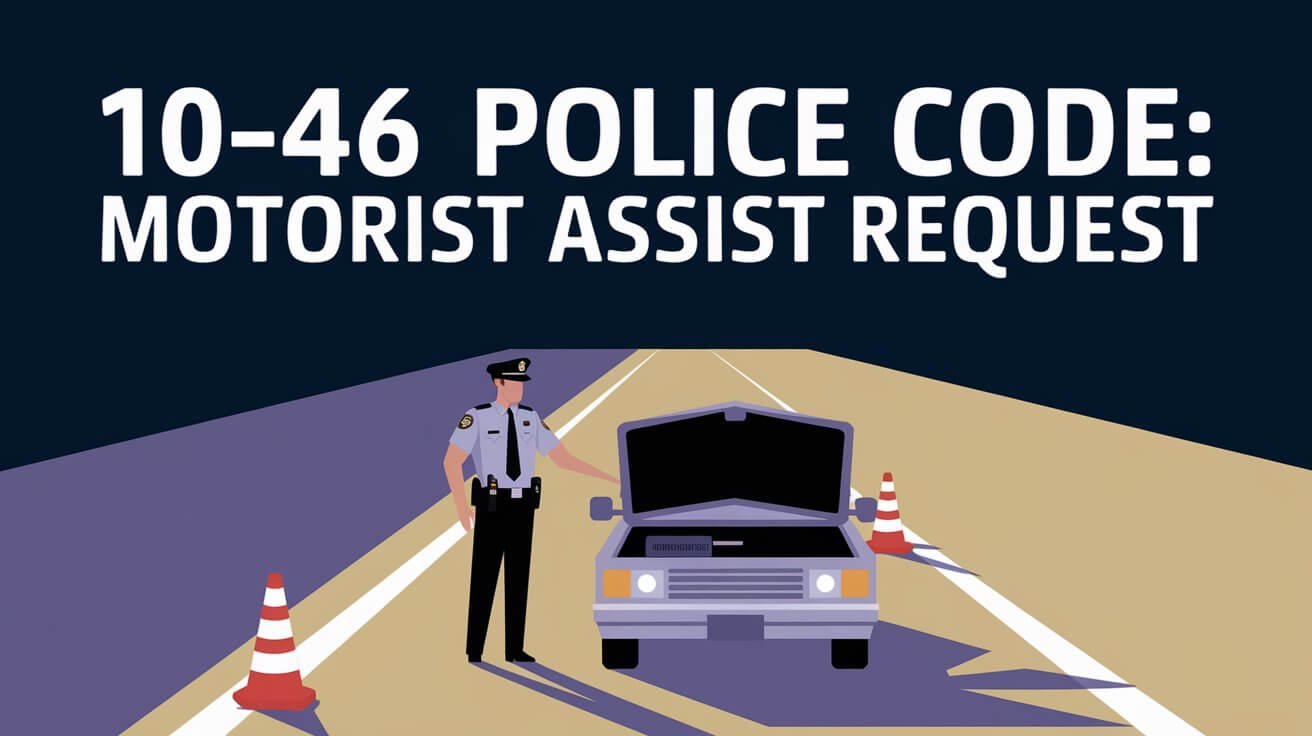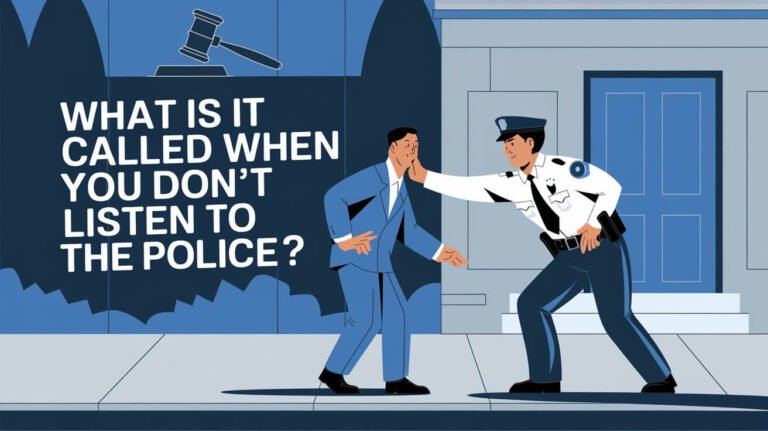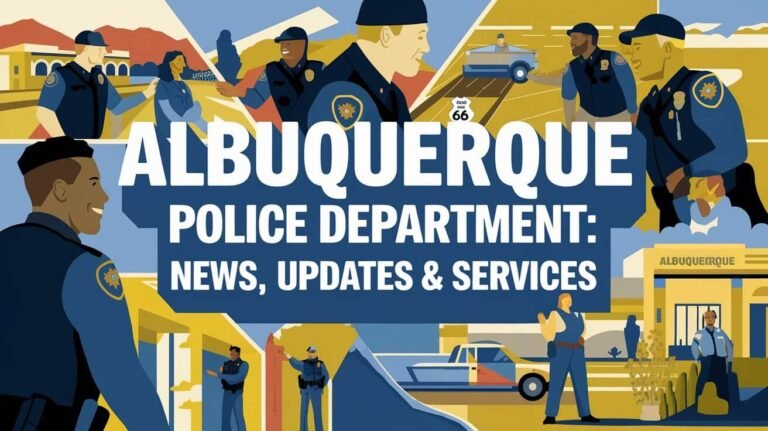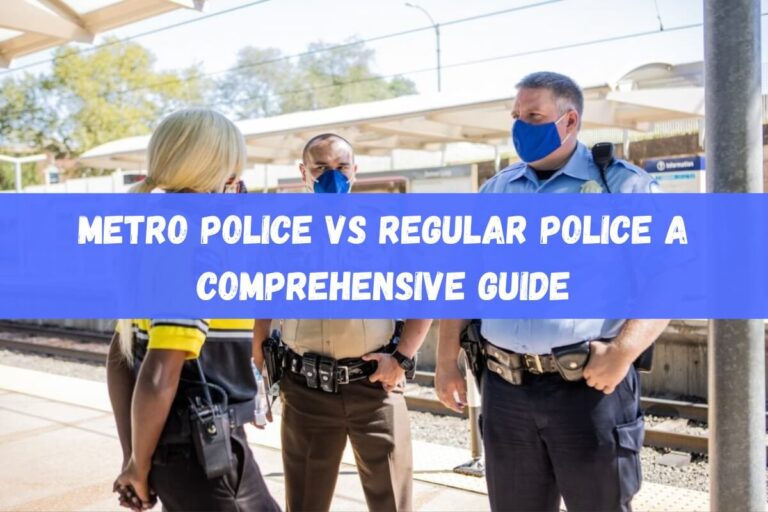10 46 Police Code: Motorist Assist Request

Emergency responders rely on a system of codes to quickly communicate the nature of a situation. One such emergency code is the 10-46 police code, used to signal specific types of incidents.
This particular code is utilized by law enforcement agencies across the United States to indicate situations such as bank alarms or to assist motorists. Understanding the meaning and usage of the 10-46 code is crucial for effective emergency response.
By familiarizing oneself with this and other police codes, individuals can better appreciate the complexity and coordination involved in emergency services.
Key Takeaways
- The 10-46 code is used for specific emergency situations.
- Law enforcement agencies use this code to signal incidents like bank alarms.
- Assisting motorists is another critical use of the 10-46 code.
- Understanding police codes enhances appreciation for emergency responders.
- Effective communication is key in emergency response situations.
What the 10-46 Police Code Means
The 10-46 police code is a critical component of police radio communication, used to convey urgent messages. It is essential to understand its meaning to appreciate its role in emergency responses.
Official Definition Across Departments
The 10-46 police code has different meanings across various law enforcement departments. Officially, it is used to signal a bank alarm or assist a motorist. This code is crucial for dispatching the appropriate response to emergency situations.
Emergency Traffic Designation
In emergency traffic situations, the 10-46 code designates a high-priority response. This means that when the code is used, it indicates a need for immediate assistance, ensuring that responders are alerted to the urgency of the situation.
Urgent Response Requirements
When the 10-46 code is called, it triggers urgent response requirements. Responders must be prepared to react quickly to the emergency, whether it’s a bank alarm or an assist motorist situation.
| Situation | Code Used | Response |
|---|---|---|
| Bank Alarm | 10-46 | Immediate Response |
| Assist Motorist | 10-46 | Urgent Assistance |
The use of the 10-46 police code streamlines communication during emergencies, ensuring that the right help is dispatched promptly.
History of the Ten-Code System
The ten-code system has a rich history that dates back to the early days of police radio communication. Its development was a crucial step in enhancing the efficiency and clarity of law enforcement communications.
Origins in 1930s Police Radio Communication
In the 1930s, police departments began adopting radio technology to improve their response times and operational coordination. However, the early radio communication systems lacked standardization, leading to confusion and inefficiencies.
The introduction of the ten-code system addressed this issue by providing a standardized set of codes for common communications. This innovation significantly improved the clarity and speed of police radio communications.
APCO’s Role in Development
The Association of Public-Safety Communications Officials (APCO) played a pivotal role in the development and standardization of the ten-code system. APCO worked closely with law enforcement agencies to create a universally accepted set of codes.
APCO’s efforts ensured that the ten-code system was adopted widely across different jurisdictions, facilitating interoperability and coordination among various law enforcement agencies.
Key milestones in the development of the ten-code system include:
- The initial adoption of ten-codes in the 1930s
- APCO’s standardization efforts
- Widespread adoption across law enforcement agencies
| Year | Event | Significance |
|---|---|---|
| 1930s | Introduction of ten-code system | Standardized police radio communication |
| 1940s-1950s | APCO’s standardization efforts | Universal adoption across jurisdictions |
| 1960s-present | Widespread use in law enforcement | Enhanced interoperability and coordination |
Regional Variations of 10-46 Police Code
The interpretation of the 10-46 police code varies significantly from one region to another. This variation is largely due to the different needs and practices of various law enforcement agencies across the country.
Regional differences in the application of the 10-46 police code can lead to confusion, especially during multi-agency responses. Understanding these variations is crucial for effective communication and coordination among different departments.
East Coast Interpretations and Usage
On the East Coast, the 10-46 police code is used by various law enforcement agencies, but its interpretation can differ. For instance, the code’s usage in urban areas may vary from its usage in more rural settings.
NYPD vs. State Police Differences
A notable example of regional variation can be seen in the difference between how the NYPD and the state police interpret and use the 10-46 code. While the NYPD might use it in a specific context related to their urban policing needs, the state police may apply it differently, reflecting their broader jurisdiction and different operational requirements.
For example, the NYPD might use the 10-46 code to signal a specific situation that requires a unique response within the city’s dense environment. In contrast, the state police might use the same code for a situation that is more relevant to their role in maintaining law and order across a wider, less densely populated area.
The 10-46 Police Code in Action
Upon receiving a 10-46 police code, dispatchers follow established protocols to clear radio channels and deploy officers to the scene. This code is a critical signal that requires immediate attention and a coordinated response from law enforcement teams.
Dispatch Procedures When Code Is Called
Dispatch procedures involve a series of steps to ensure a swift and effective response to emergency situations. When a 10-46 code is called, dispatchers:
- Clear the radio channel to prevent interference and ensure clear communication.
- Alert nearby units to respond to the emergency.
- Provide critical information about the situation to responding officers.
Radio Channel Clearing Protocols
Radio channel clearing protocols are essential to prevent communication breakdowns during emergency responses. When a 10-46 code is activated, dispatchers implement the following protocols:
| Protocol | Description |
|---|---|
| Channel Clearance | Dispatchers clear the radio channel of non-essential communications. |
| Priority Messaging | Emergency messages are given priority to ensure timely communication. |
| Unit Notification | Nearby units are notified to respond to the emergency. |
Following these protocols, law enforcement agencies can ensure a swift and effective response to emergency situations, ultimately enhancing public safety.
Related Ten-Codes in Emergency Categories
Understanding related ten-codes is crucial for effective emergency response. The 10-46 police code is part of a broader set of codes used by law enforcement and emergency responders to convey specific information quickly.
These codes are categorized into different emergency categories, allowing responders to prioritize and respond to situations efficiently. Familiarity with these codes is essential for both law enforcement personnel and emergency medical responders.
Codes Frequently Used Alongside 10-46
Several ten-codes are frequently used in conjunction with the 10-46 police code. Some of these include:
- 10-33: Indicates an emergency situation requiring immediate assistance.
- 10-20: Used to report the location of a unit or person.
- 10-4: Acknowledges receipt of a message.
10-33 and Other Emergency Codes
The 10-33 code is particularly significant as it signals an emergency that requires an immediate response. Other emergency codes like 10-13 (officer needs assistance) and 10-23 (stand by) are also crucial in emergency situations. Understanding these codes and their applications is vital for effective emergency response.
Familiarizing themselves with these related ten-codes, emergency responders can enhance their response strategies and improve overall emergency management.
Training for Effective 10-46 Code Response
To respond effectively to the 10-46 code, law enforcement officers must undergo extensive training that includes simulation and stress response training. This comprehensive training is crucial for preparing officers to handle high-pressure situations that arise when the 10-46 code is called.
Effective training ensures that officers can respond appropriately, maintaining public safety and minimizing risks.
Academy Simulation Exercises
Academy simulation exercises play a vital role in training law enforcement officers to respond to the 10-46 code. These exercises simulate real-life emergency scenarios, allowing officers to practice their response in a controlled environment.
- Realistic Scenarios: Simulations mimic actual emergency situations, preparing officers for the unexpected.
- Team Coordination: Exercises focus on improving communication and coordination among team members.
- Decision Making: Officers are trained to make quick, informed decisions under pressure.
Stress Response Training
Stress response training is an integral part of preparing officers for the 10-46 code. This training helps officers manage their stress levels during emergency responses, ensuring they remain focused and composed.
- Simulation of High-Pressure Situations: Officers are exposed to simulated high-stress environments to build their resilience.
- Breathing and Relaxation Techniques: Officers learn methods to control their stress and maintain clarity of thought.
- Debriefing Sessions: After simulations, debriefing sessions help officers reflect on their performance and identify areas for improvement.
Common Misconceptions About the 10-46 Police Code
The actual use and meaning of the 10-46 police code differ significantly from its depiction in popular culture. This discrepancy often leads to misunderstandings about the code’s significance and application in real-life emergency situations.
Media Portrayals vs. Actual Police Practice
Media portrayals, especially in Hollywood films and television shows, frequently misrepresent the 10-46 police code. These depictions can create unrealistic expectations about emergency response situations and the code’s role within them.
Hollywood vs. Reality
Some common misconceptions include:
- The 10-46 code is often dramatized as being more critical or urgent than it actually is.
- Police procedures shown in media are not always accurate or up-to-date.
- The code is sometimes used in contexts that are not typical of real police work.
In reality, the 10-46 police code is used for specific situations, and its application is guided by departmental protocols and training. Understanding the actual use of the code can help clarify its importance in law enforcement communication.
Key facts about the 10-46 police code:
- It is used to signal a specific situation or status update.
- The code’s meaning can vary slightly between different law enforcement departments.
- Proper training is essential for officers to understand and use the code correctly.
Modern Alternatives to Traditional 10-46 Code
In recent years, law enforcement has started adopting new communication methods to enhance clarity and efficiency in emergency responses. One significant shift is towards modern alternatives to traditional codes like 10-46.
The traditional ten-code system, while effective in its time, has limitations in today’s complex emergency scenarios. As a result, there’s a growing trend towards adopting plain language communication in policing.
Plain Language Communication Shift
The move towards plain language is driven by the need for clear and concise communication, especially in high-stress situations. This shift is characterized by:
- Reduced reliance on coded language
- Increased clarity in dispatch communications
- Better understanding among multi-agency teams
Post-9/11 Protocol Changes
The aftermath of 9/11 brought significant changes to emergency communication protocols. These changes include:
- Enhanced interoperability between different emergency services
- Standardization of communication protocols across regions
These modern alternatives and protocol changes are designed to improve response times and effectiveness in emergency situations, marking a significant evolution in how law enforcement communicates.
Legal Aspects of 10-46 Code Incidents
The legal framework surrounding 10-46 code incidents is complex and multifaceted, involving various legal considerations that law enforcement agencies must navigate.
Documentation Requirements for Emergency Calls
When a 10-46 code is called, it triggers a series of legal protocols that require meticulous documentation. Accurate and detailed records of emergency calls are crucial for legal proceedings and internal reviews.
Documentation requirements include capturing the time of the call, the nature of the emergency, and the response actions taken by law enforcement. This information is vital for ensuring transparency and accountability.
Report Writing Standards
Effective report writing is essential for documenting 10-46 code incidents. Reports must be clear, concise, and comprehensive, providing a thorough account of the incident.
- Reports should include the incident location, time, and date.
- Details of the individuals involved, including witnesses, victims, and suspects.
- A narrative of the events as they unfolded.
- Any actions taken by law enforcement, including arrests or use of force.
Adhering to these report writing standards helps ensure that legal aspects of 10-46 code incidents are properly documented, supporting both legal proceedings and departmental reviews.
10-46 Code in Multi-Agency Operations
The 10-46 code is crucial in multi-agency operations, where effective coordination is key to successful emergency responses. In scenarios involving multiple law enforcement agencies, the use of standardized codes like 10-46 ensures that communication is clear and efficient.
Coordination Challenges Between Departments
Despite the importance of coordination, multi-agency operations often face challenges due to differences in departmental protocols and communication styles. Effective coordination is critical to overcome these challenges, ensuring that responses to emergencies are swift and well-organized.
Mutual Aid Agreement Protocols
Mutual aid agreements are essential in multi-agency operations, outlining the procedures for different departments to work together seamlessly. These protocols ensure that when a 10-46 code is called, the response is unified and coordinated across agencies. Key aspects of these protocols include:
- Clear communication channels
- Standardized response procedures
- Regular training exercises
Adhering to these protocols, law enforcement agencies can enhance their collaborative efforts, leading to more effective emergency responses.
Future of the 10-46 Police Code
The future of the 10-46 police code is intricately linked with advancements in technology. As emergency services continue to embrace new technologies, the way the 10-46 code is used and interpreted is likely to change. This evolution is driven by the need for more efficient, clear, and adaptable communication systems.
Technological advancements are not just improving existing systems but are also introducing new ways to manage emergency responses. One significant development is the integration of artificial intelligence (AI) in dispatch systems.
Technological Impacts on Emergency Communication
The impact of technology on emergency communication is multifaceted. It includes improvements in dispatch procedures, enhanced data analysis for better response strategies, and more robust communication networks. These advancements are poised to make emergency responses more effective.
AI-Assisted Dispatch Systems
AI-assisted dispatch systems represent a significant leap forward. These systems can analyze vast amounts of data quickly, predict potential outcomes, and assist dispatchers in making informed decisions rapidly. For instance, AI can help in prioritizing calls, allocating resources more effectively, and even predicting the likelihood of certain codes being called based on historical data.
The integration of AI-assisted dispatch systems with codes like the 10-46 police code could lead to more streamlined emergency responses. By leveraging AI, dispatchers can respond more effectively to emergencies, potentially reducing response times and improving outcomes.
The Bottom Line
The 10-46 police code plays a vital role in emergency response situations, serving as a crucial tool for law enforcement agencies to communicate effectively. Understanding its meaning, usage, and regional variations is essential for a swift and effective response.
As technology continues to evolve, the 10-46 police code will remain a vital component of emergency communication. Its significance extends beyond the code itself, representing a broader effort to standardize emergency communication protocols.
Grasping the nuances of the 10-46 police code, individuals can better appreciate the complexities of emergency response and the importance of clear communication in high-pressure situations. The code’s continued relevance underscores the need for ongoing training and education in emergency response procedures.
Post-Specific FAQs
What does the 10-46 police code mean?
The 10-46 police code is used to signal a bank alarm or assist a motorist, and it can have different meanings across various law enforcement departments.
How is the 10-46 police code used in emergency response situations?
The 10-46 police code is used to designate a high-priority response in emergency traffic situations, triggering urgent response requirements and indicating a need for immediate assistance.
What is the history of the ten-code system?
The ten-code system has its roots in the 1930s, when police radio communication began to take shape, with APCO playing a significant role in its development.
Are there regional variations in the usage of the 10-46 police code?
Yes, the 10-46 police code has different interpretations and usage across regions, with distinct differences in its use by NYPD and state police on the East Coast.
What happens when the 10-46 police code is called?
When the 10-46 police code is called, dispatch procedures are triggered to respond to the emergency situation, with radio channel clearing protocols implemented to ensure clear communication.
What other ten-codes are used alongside the 10-46 police code?
Codes like 10-33, which indicates a need for immediate assistance, are crucial in emergency response situations and are often used alongside the 10-46 police code.
How do law enforcement officers receive training for responding to the 10-46 police code?
Law enforcement officers receive comprehensive training, including academy simulation exercises and stress response training, to prepare them for high-pressure situations when responding to the 10-46 police code.
How is the 10-46 police code represented in the media?
The 10-46 police code is often misrepresented in media portrayals, differing from actual police practice, with Hollywood depictions being particularly misleading.
Are there modern alternatives to the traditional 10-46 police code?
Yes, modern alternatives, such as plain language communication, are being used to supplement the traditional 10-46 police code, driven by post-9/11 protocol changes prioritizing clarity and efficiency.
What are the legal implications of the 10-46 police code?
The 10-46 police code has significant legal implications, particularly in documentation requirements for emergency calls, with report writing standards that must be adhered to.
How is the 10-46 police code used in multi-agency operations?
The 10-46 police code plays a critical role in multi-agency operations, where coordination between departments is essential, with mutual aid agreement protocols being vital in ensuring a unified response.
What is the future of the 10-46 police code?
The future of the 10-46 police code will be shaped by technological advancements, including AI-assisted dispatch systems, which will continue to evolve emergency communication, prioritizing efficiency and effectiveness.
What is the significance of understanding the 10-46 police code?
Understanding the 10-46 police code is essential for effective response to emergency situations, as it allows law enforcement agencies to communicate efficiently and respond to emergencies in a timely manner.






